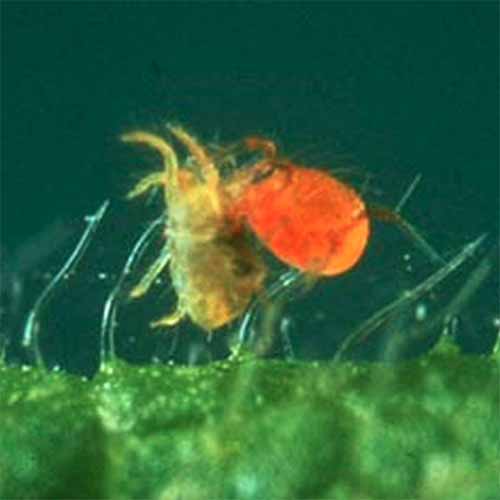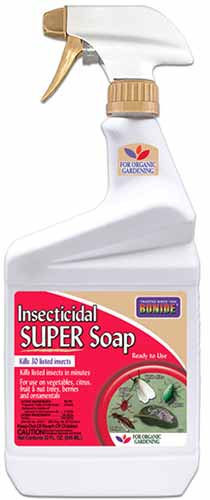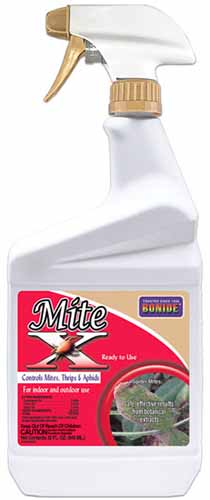Generally, succulents are problem-free plants that seem to thrive on neglect. Don’t over- or underwater, and you’ll be able to keep these thick leafed, eye-catching beauties thriving in your home or garden.
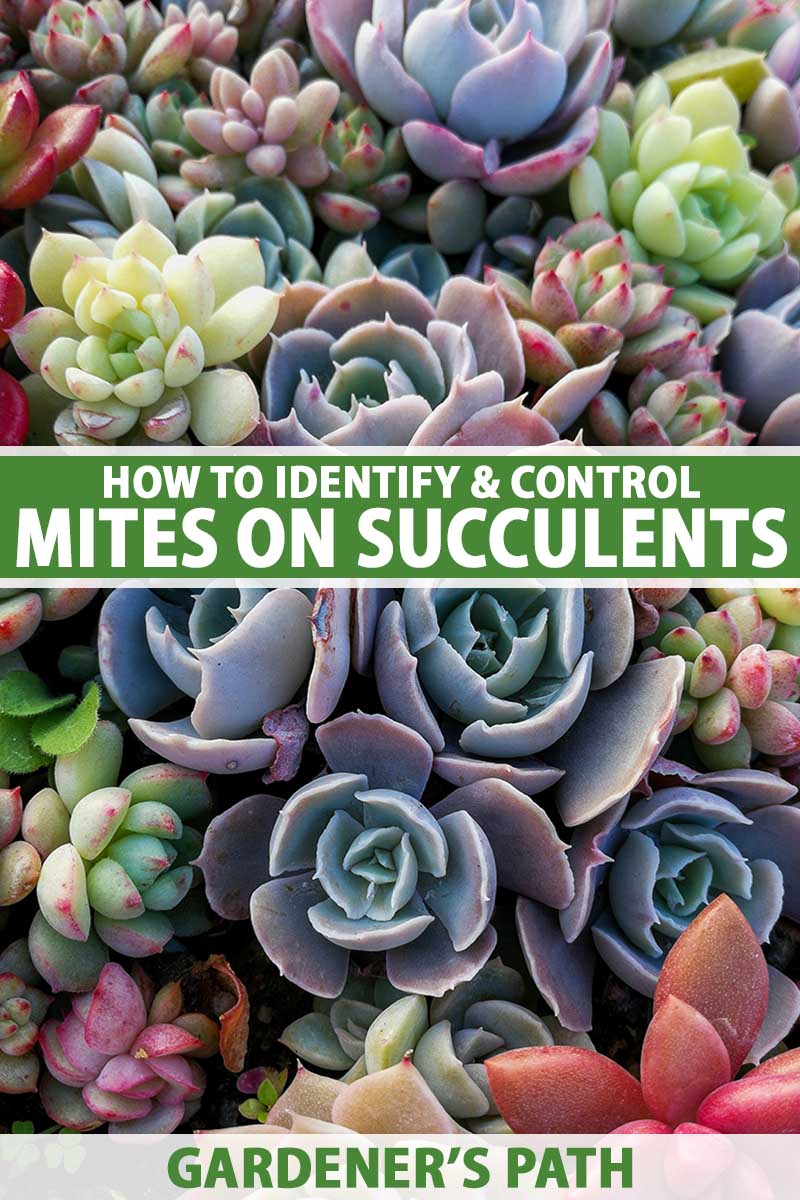
We link to vendors to help you find relevant products. If you buy from one of our links, we may earn a commission.
Unfortunately, like all types of plants, occasional visitors can turn into unwelcome pests draining the life and beauty from your beloved succulents. Mites are one type of pest that can damage your trendy collection of colorful, shapely plants.
We’ve got everything you need to know about three common types of mites that you may find feeding on your succulents below, including identification details and control options.
Here’s what we’ll cover:
How to Identify and Control Succulent Mites
The Lowdown
Not actually insects, mites in general are more closely related to spiders than six-legged creatures.
In general, these tiny arachnids have piercing-sucking mouthparts that pierce through the epidermis of the plant and suck out the cell contents.
Their feeding causes the plant victim to become dull in color, covered in light-colored specks. Affected plants will sometimes look bronzed, sunburnt, or pale, with reduced growth and vigor.
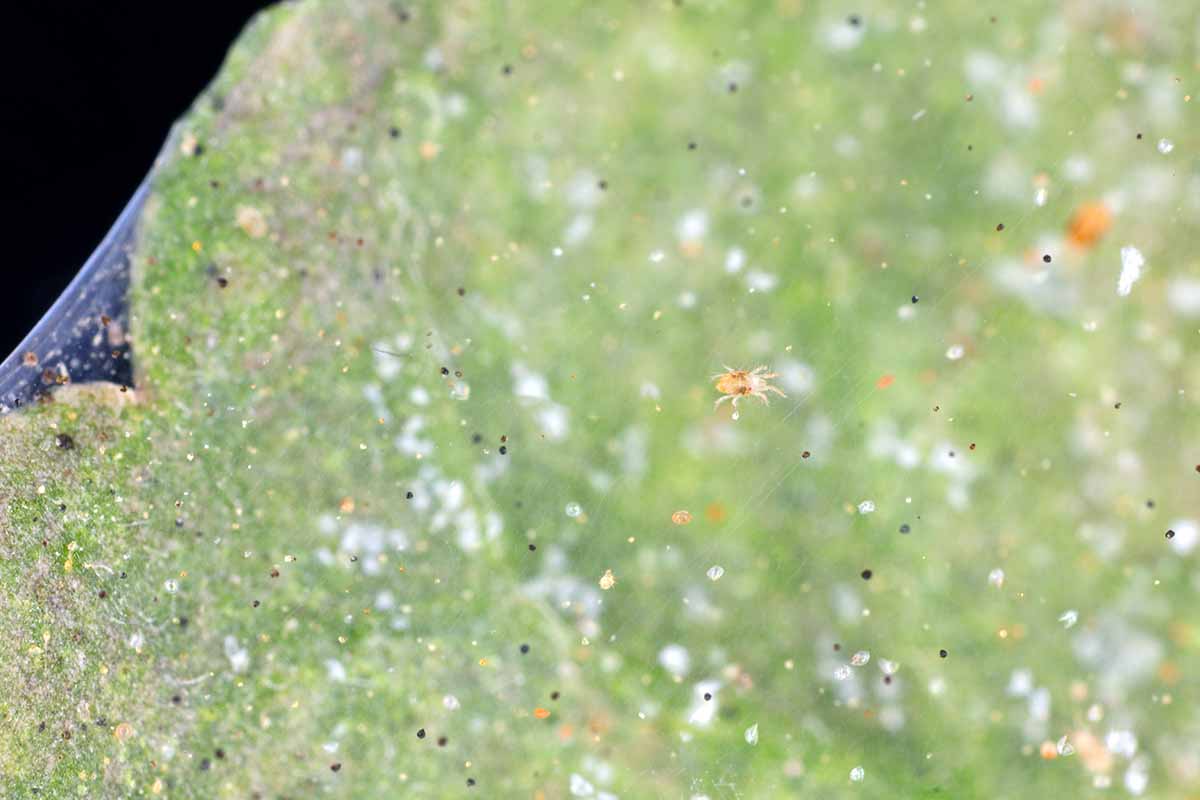
Plus, when populations of these pests are large enough, you might notice their fine webs wrapping the leaves, acting as a moisture barrier and protective layer for the eggs and juveniles.
Mite infestations are not as common for succulents as problems with scale or mealybugs, but they do pop up on occasion.
These pests typically prefer hot and dry conditions, so you may notice infestations during the warmer seasons. Keep this in mind, because it will become important later on!
Succulent Mite Types
The three most common types that you may discover on your succulents are described below.
Two are varieties of spider mites, very common plant pests, and the third is a tiny one that’s impossible to notice until it’s too late.
Two-Spotted Spider Mites
One of the most common indoor and greenhouse pests and spider mite species to exist, Tetranychus urticae is a tiny beast that packs a big punch.
These are often called red spider mites, but that name is very confusing, since the next species listed below actually has red coloring, while the two-spotted spider mite (or TSSM) is yellow-green in color with dark spots most of the time. But it can turn a red-orange color outdoors in the fall.
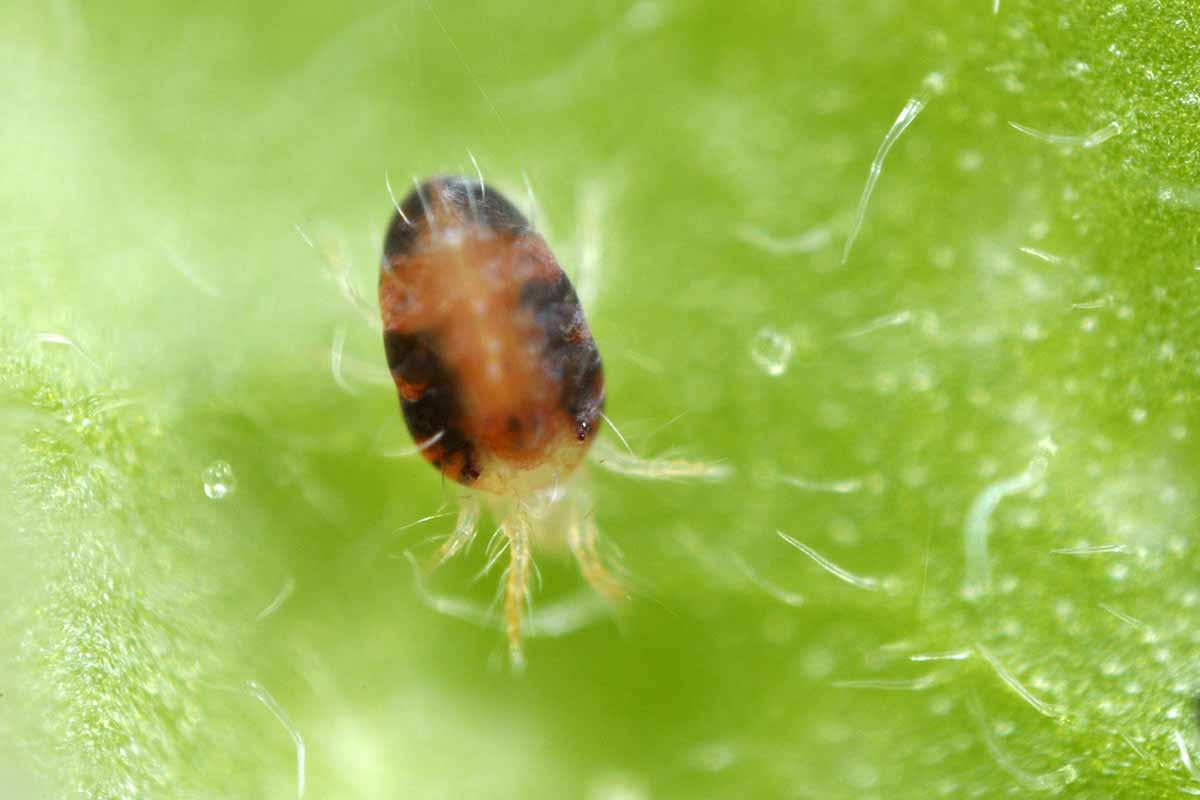
This little pest has a very wide host range – so wide that it’s easier to list the plants that won’t fall prey to it than it would be to list those that do!
They love hot and dry conditions so you’ll often see populations spike in the summer, though they can be present year round in heated greenhouses or your house. Keep an eye out for them outdoors from March to October.
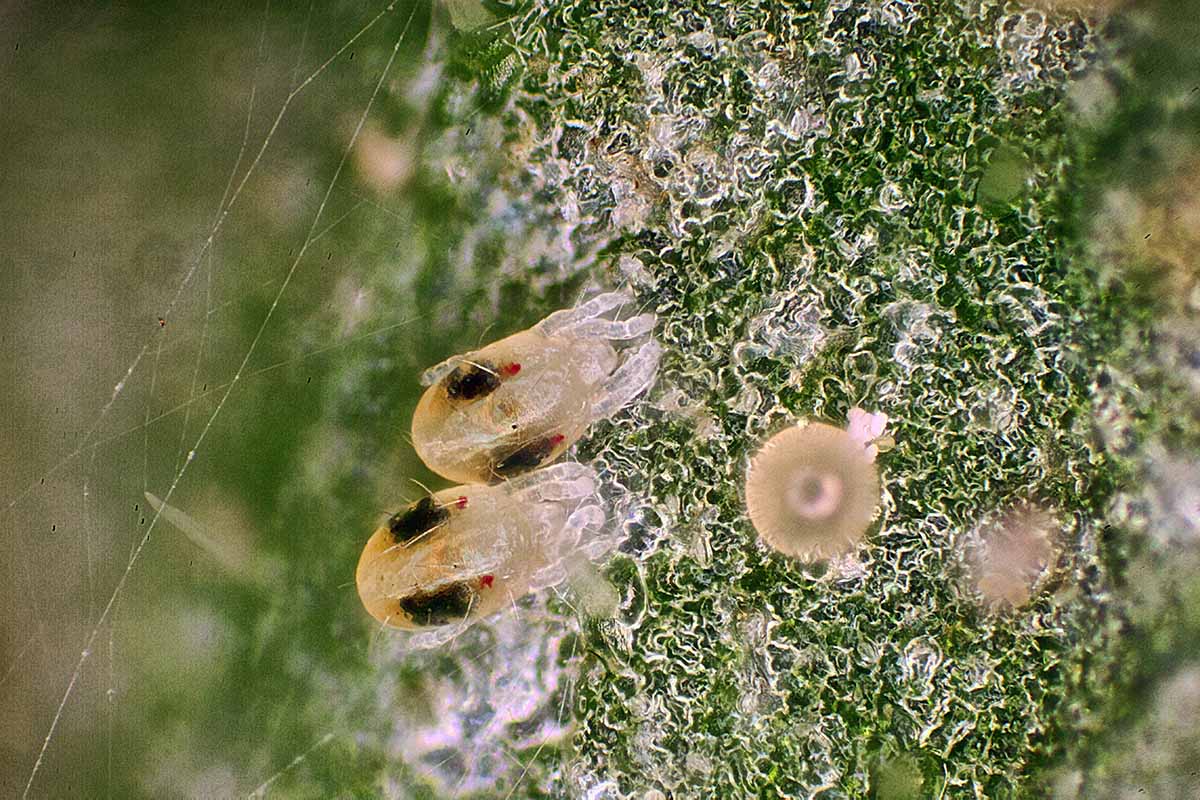
They’re hard to see, usually only becoming obvious when you observe their shiny round eggs, light-colored juveniles, and active adults through a 10X hand lens.
They produce fine webbing, and a characteristic mottled, speckled damage on succulents.
Carmine Spider Mites
Also known as red, cotton, or carnation spider mites, these bright reddish-purple-colored creatures can also appear as unwelcome visitors on your succulents.
Like the two-spotted variety, T. cinnabarinus is tiny and best observed through a hand lens.
The damage they cause often presents as yellowing along the foliage with the typical stippling.
Read more about spider mites here.
Eriophyid Mites
While both species described above have eight legs like spiders, these teeny-tiny guys are more worm-like in shape and have two pairs of legs.
And while the two species above are excellent movers, eriophyids as a group aren’t good at crawling and rely on the wind to spread.
The damage they create is different as well, as they can cause galls, blisters, and leaf bronzing, depending on the species.
Eriophyes aloinis (syn. Aceria aloinis) for example, forms ugly galls on plants.
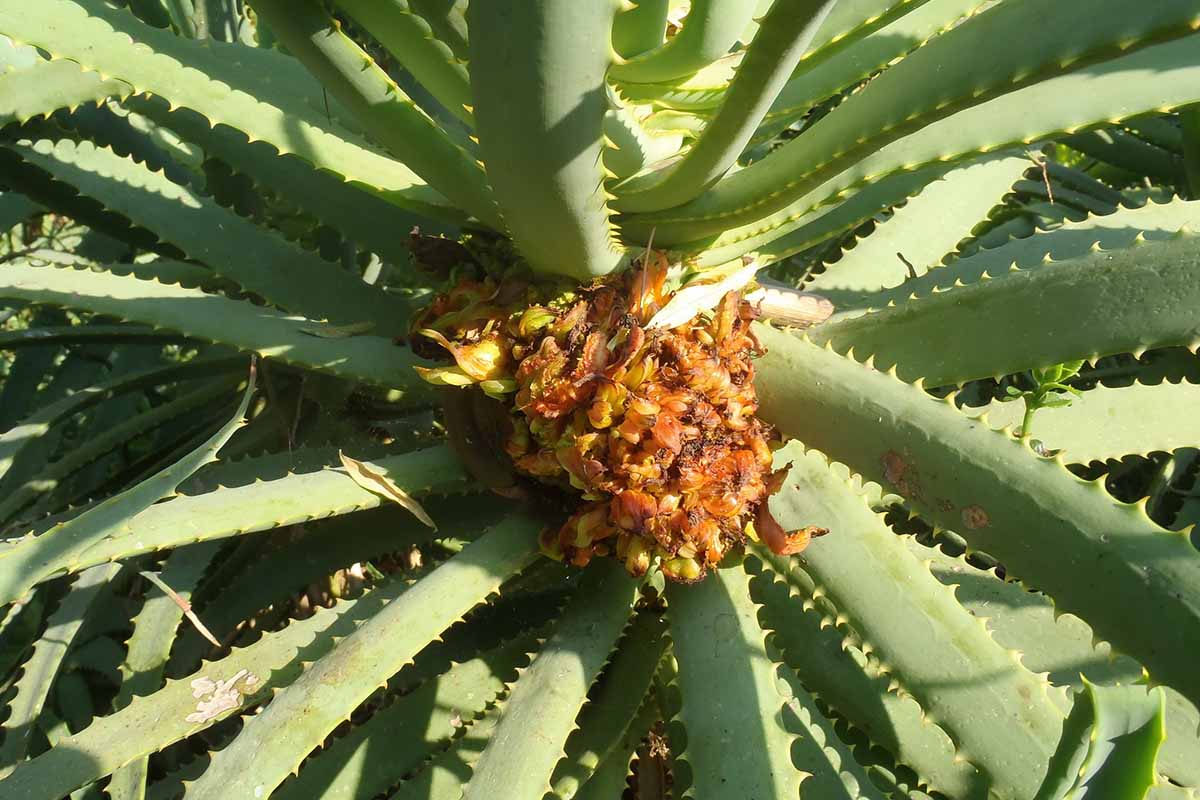
Unfortunately, being microscopic, these pests are impossible to see with the naked eye. And they’re difficult to control, especially when protected inside galls.
Luckily, though the damage they cause ruins the aesthetic qualities of plants and is irreversible, this type rarely kills succulents, and simply uglifies them.
Control Methods
Control methods are similar for most types, so read on to discover what you can do if you discover these little pests on your succulents.
Monitor for them regularly, as their populations are easiest to control when present in small numbers.
Always try physical and cultural control options first. Healthy plants are much better equipped to endure and survive pest attacks than those that are already stressed. Avoid excessive fertilizer, especially nitrogen.
These pests typically like hot and dry conditions, so increasing humidity by misting your plants regularly, or using a strong stream of water to wash off the adults, juveniles, eggs, and webs, can be very effective.
Although the spider types are relatively good crawlers compared to the eriophyid types, a cold stream of water knocking them off the plant will put a damper on their progress.
Make sure your plants aren’t crowded. Quarantine any suspect or infested plants.
There are several biological control options that are effective:
Phytoseiulus persimilis, available at Arbico Organics, is a predatory mite that likes humid conditions, so releasing these as directed according to package instructions will work well paired with a regular misting strategy.
Phytoseiulus persimilis Predator
Amblyseius species, including swirskii, andersoni, californicus, and fallacis, are excellent mite predators as well. Each species of beneficial mite from this genus has its own ideal working conditions.
For example, A. fallacis can survive when prey populations are low, and deals well with warm temperatures and lower humidity than other predators.
Choose your predator based on your home or climate conditions, pest densities, and pest species.
Before you bring out the harsh and potentially toxic chemicals, try organic options that are safer for you and your other home occupants.
Bonide Insecticidal Super Soap
Insecticidal soaps and oils can be effective, such as Bonide Insecticidal Super Soap, available from Arbico Organics in quart-size ready-to-use spray bottles, or Bonide Neem Oil, also available from Arbico Organics.
Always test the product on a small part of the plant before applying it to the entire plant for treatment to make sure it doesn’t have any phytotoxic effects, or in other words, effects that may be toxic to plants.
Arbico Organics also carries a product containing a mix of botanical oils called Bonide Mite-X, which can provide good control.
Unfortunately, eriophyid species aren’t as easily controlled by most of the above methods and products as TSSM and T. cinnabarinus.
Azera Gardening Botanical Insecticide
Try something with a bit more punch to attempt control, such as Azera Gardening Botanical Insecticide, available at Arbico Organics, which combines pyrethrum and azadirachtin.
As far as chemicals go, most acaricides, which are pesticides specifically made to combat mites and similar pests, will work for the varieties described here.
Pyrethroids and organophosphates may also do the trick, but most of these harsher pesticides are not the best choice for use on indoor plants, and can severely damage populations of beneficial insects that you’ve released in the garden or that were provided by Nature.
Keep in mind that most sprays, including Azera Gardening Botanical Insecticide mentioned above, and chemical insecticides, are best applied outdoors.
Houseplants can be brought back inside once the re-entry interval, as specified on the product’s label, has passed.
A Tiny But Mighty Foe
These microscopic pests can suck the succulence right out of your favorite ornamentals, but now that you know your enemies, what to watch out for, and how to deal with them if they do appear, you’re in a good place.
Luckily, they aren’t a very common pest on indoor succulents. Don’t let that lull you into passivity though, because once they get started, populations can explode seemingly overnight, and the damage they cause can become severe.
If you grow succulents outdoors, keep an eye out for damage from pests that arrive on the breeze!
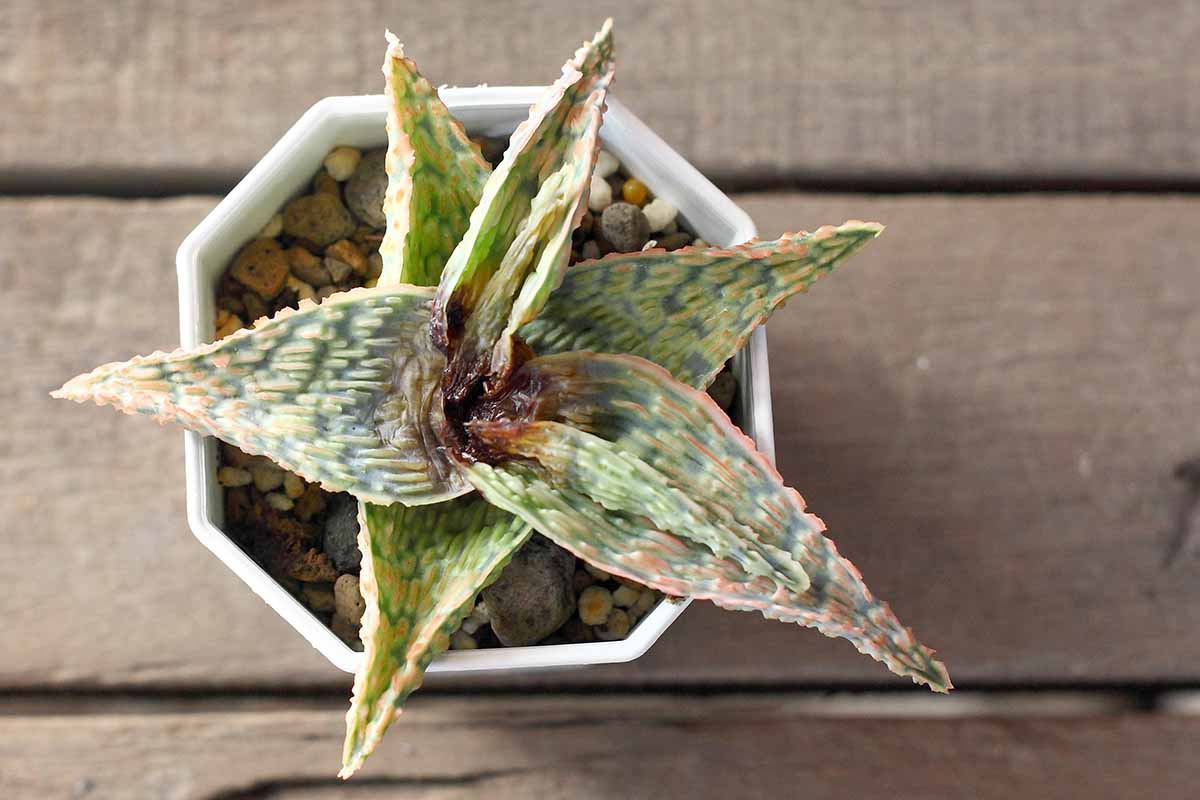
If you grow succulents, what pests have you had to deal with? Have you ever had a mite problem? Tell us about it in the comments down below!
In the meantime, read more about growing and caring for succulents in these helpful guides:
